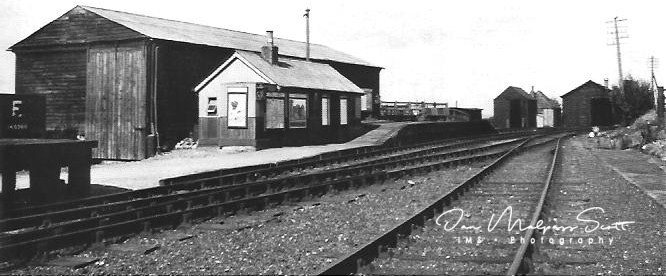
Brill railway station was the terminus of a small railway line in Buckinghamshire, England, known as the Brill Tramway. Built and owned by the 3rd Duke of Buckingham, it was later operated by London’s Metropolitan Railway, and in 1933 briefly became one of the two north-western termini of the London Underground, despite being 45 miles (72 km) and over two hours’ travelling time from the City of London.
Approximately 3⁄4 of a mile (1.2 km) north of Brill, the station was opened in March 1872 as the result of lobbying from local residents and businesses. As the line was cheaply built and ungraded and the locomotives were of poor quality, services were very slow, initially taking 1 hour 45 minutes to traverse the six miles (10 km) from Brill to the junction station with mainline services at Quainton Road. Although serving a lightly populated area and little-used by passengers, the station was a significant point for freight traffic, particularly as a carrier of milk from the dairy farms of Buckinghamshire to Aylesbury and London. A brickworks was also attached to the station, but it proved unable to compete with nearby rivals and closed within a few years of opening.
During the 1890s, plans were made to extend the tramway to Oxford, but the scheme was abandoned. Instead, the operation of the line was taken over by the Metropolitan Railway in 1899, and the line became one of the railway’s two north-western termini. It was upgraded and better-quality locomotives were introduced making the journey time three times faster.
In 1933 the Metropolitan Railway was taken into public ownership and became the Metropolitan line of London Transport. The management of London Transport aimed to reduce goods services, and it was felt that there was little chance of the more distant parts of the former Metropolitan Railway ever becoming viable passenger routes. The line was closed on 30 November 1935, and all buildings and infrastructure at Brill associated with the line were sold at auction. Most of the infrastructure was subsequently demolished, though three station cottages survive.


